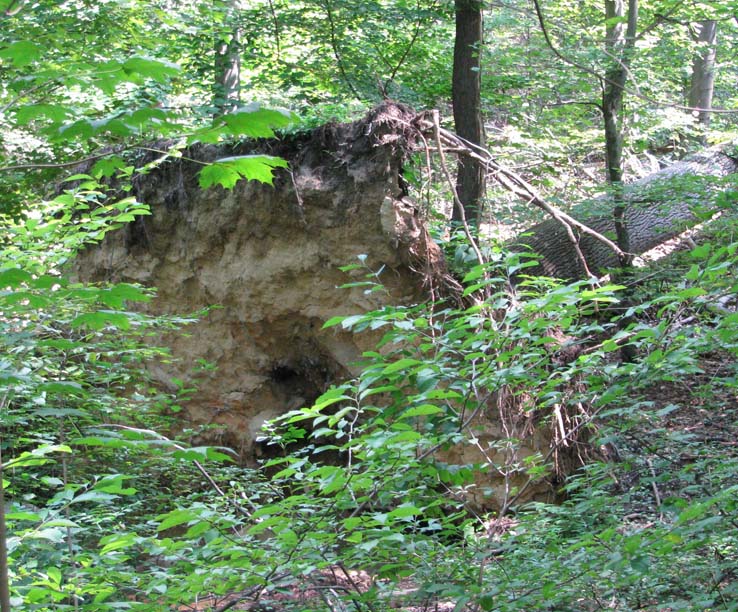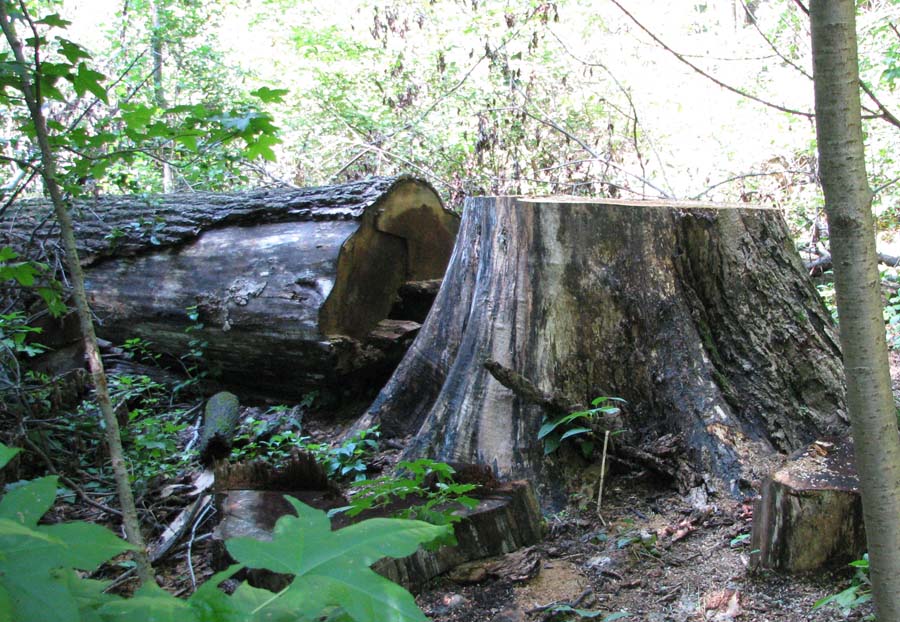The Fate of Tuliptree #98
Posted in Behind the Scenes, Science on September 16 2011, by Sandy Wolkenberg
Ed. note: Sandy Wolkenberg is a Citizen Scientist who has been working in the Thain Family Forest for three and a half years. Over the course of a week on Plant Talk, Sandy will share a five-part series of posts on The New York Botanical Garden’s Citizen Scientist Tree Phenology Program. If Sandy’s experiences motivate you to want to know more about becoming a Citizen Scientist, check out the Garden’s Volunteer Program page.
The tree is more than first a seed, then a stem, then a living trunk, and then dead timber.
The tree is a slow, enduring force straining to win the sky.
~ Antoine de Saint-Exupéry, The Wisdom of the Sands, (translated from French by Stuart Gilbe.)
Following a major wind storm in the spring of 2010, the volunteers that make up the Citizen Scientist Tree Phenology program walked the trails of the Thain Family Forest scrutinizing each tree. We were mystified by the fact that Tuliptree #93, a giant tulip poplar, appeared to have vanished. We walked back and forth searching for the tree, and then searched again. Where could it be? We noticed a huge root ball attached to a large upended tree that had fallen back into the Forest. We speculated that this fallen giant must be Tuliptree #93. Our suspicion was confirmed during a walk with Jessica Arcate Schuler, Manager of the Thain Family Forest, when she found tag #93 on the reclining giant. Alas, our first–but not our last–loss.

And so we return to where our story began: Tuliptree #98* and the news that another tulip poplar, one we had been recording for three years, had been felled. In 2010 on a walk through the Forest with Jessica to meet the workers who were restoring the Spicebush Trail, she remarked on Tuliptree #98. She pointed out that it was an old tree, had been hit by lightning, and was not thriving. But it was leafing, flowering, and producing fruit despite all these tree hardships. Thus, Jessica’s email was not surprising, but it was still sad.
On a rainy day in April, I decided to visit Tuliptree #98, expecting to find a gaping space where it had stood for those 150 years. Surely the trunk had been shredded and the stump ground up. But there it was! And then I remembered that fallen Forest trees are left to nourish wildlife and the forest’s many decomposers for years, until the tree itself decomposes, becoming the soil in which new tulip poplar saplings will take root and grow.

To the great tree-living fraternity we belong. We love trees with universal and unfeigned love, and all things that do grow under them or around them – the whole leaf and root tribe.
~ Henry Ward Beecher
*As part of the two festival weekends marking the Thain Family Forest Dedication in November, 2011, we will be featuring Tuliptree #98 in a panel about the life of a tree in A Forest in the City: Centuries of Sylvan Beauty an exhibition exploring the history and significance of the Thain Family Forest in the LuEsther T. Mertz Library’s Rondina Gallery.
Sandy’s Previous Posts:
Citizen Science: There’s Strength In Numbers

